Dr. César Núñez, Director of the UNAIDS Regional Office for Latin America, launched “Treatment 2015”, the action framework to speed up access to treatment to reach 15 million people in antiretroviral treatment by 2015. This came a few days after the world launch in Nigeria. According to the official UNAIDS release, “Treatment 2015” offers countries and partners practical and innovative ways to increase the number of people with access to medication. This will not only allow people with HIV/AIDS to live longer and better, but will also help prevent new infections.
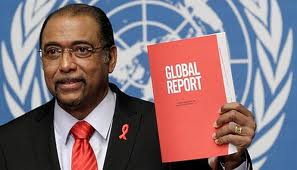
Developed with various UN Agency partners, including the WHO, Global Fund and the US President’s Emergency Plan for AIDS, this instrument was presented just days after the launch of the new WHO treatment guidelines.
“Attaining the goal set for 2015 would be an important achievement”, said UNAIDS Executive Director Michel Sidibé, adding “countries and partners must urgently and strategically invest resources and efforts to ensure that everyone has access to HIV prevention and treatment services.”
“The expansion of antiretroviral treatment is an unprecedented global success story in public health. Maintaining this drive requires earlier treatment and innovative ways to allow more people to take medication, such as combinations in a single daily pill as recommended in the new WHO guidelines”, stated WHO Director-General Dr. Margaret Chan. “The substantial expansion of access to these medications gives us a unique opportunity to irreversibly diminish this epidemic.”
What is Treatment 2015?
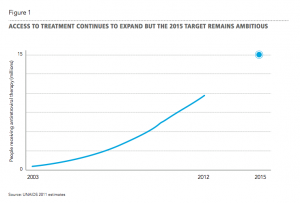
The new action framework highlights three main pillars for reaching the 2015 goal: demand, investment and results. This framework is backed by existing scientific evidence on the highly positive effects on public health of a rapid extension of antiretroviral treatment coverage. These positive effects are passed on to the economy and development in our countries.
Demand: creating demand for antiretroviral treatment, a process that must be led by people living with HIV/AIDS and Key Populations (affected by HIV such as sex workers, trans people, gays, men who have sex with men and drug users); supply must be supported by civil society and the international community. This pillar includes greater access to HIV testing and subsequently to health services.
The central focus of the demand pillar is the promotion of HIV testing and some actions are proposed: constructing and sustaining community demand for HIV testing, establishing norms for testing in all health services, educating the community about testing, expanding coverage to sex partners and connecting HIV testing with referrals to healthcare services.
 Investment: Mobilizing sustained investment to give priority to innovation and strategic use of available resources. It must not be overlooked that this framework and goal are very ambitious and will require a significant investment of resources, not only for the acquisition of medications and supplies but also to strengthen health and community systems. The great challenge is to narrow the financial gap in the world response with international and domestic resources and non-traditional innovative mechanisms. It will be necessary, therefore, to develop a strong discourse on investment in HIV treatment to entice more contributions, increasing effectiveness and efficiency. This approach will include the use of more affordable quality medications, such as generic drugs, enforcing and using the flexibilities of the Agreement on Trade-Related Aspects of Intellectual Property Rights (TRIPS).
Investment: Mobilizing sustained investment to give priority to innovation and strategic use of available resources. It must not be overlooked that this framework and goal are very ambitious and will require a significant investment of resources, not only for the acquisition of medications and supplies but also to strengthen health and community systems. The great challenge is to narrow the financial gap in the world response with international and domestic resources and non-traditional innovative mechanisms. It will be necessary, therefore, to develop a strong discourse on investment in HIV treatment to entice more contributions, increasing effectiveness and efficiency. This approach will include the use of more affordable quality medications, such as generic drugs, enforcing and using the flexibilities of the Agreement on Trade-Related Aspects of Intellectual Property Rights (TRIPS).
Results: This section of the framework is related to the capacity to provide results, ensuring the infrastructure of health and community systems and a favourable environment, with laws and policies that favour a fair approach to allow higher-risk populations continued access to healthcare. The key actions are: empowerment of communities to take control of their health programs, redesigning and decentralizing distribution systems; closing the gap in the provision of treatment; in Latin America, 40% of people living with HIV/AIDS are still receiving treatment within the health services, but less than half are still undetectable after two years.
To achieve better results a strict Monitoring and Evaluation framework is fundamental. Such framework should focus on achievements arising from program decisions.
What did leaders say at the Latin American launch?
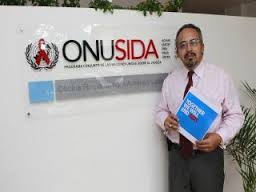
After presenting the Treatment 2015 framework, Dr. César Núñez said “This framework is built on a series of existing guidelines and recommendations. This is a framework based on evidence and a new way of thinking about our work. Our region has been at the forefront of Antiretroviral Treatment but we must work more and better in the most urgent geographic areas. It is also the case with young people, we see it as a challenge to get people into early treatment and stick to it. We must change the perception that medication is for sick people”.
WHO HIV, STI, TB and Hepatitis Unit Coordinator Dr. Rafael Mazín explained that “The goal of 15 million by 2015 is perfectly feasible in the next two and a half years. We must focus our efforts on understanding the barriers to healthcare access and overcome those obstacles quickly. The secret lies in getting the services to the tested people.”
Argentina Program Director and HTCG President Dr. Carlos Falistocco commented that “We know that in many countries there are many people living with HIV and don’t know about it (in Argentina it is 40%). We must not think that a change in guidelines will generate an avalanche of patients. For the last two years in Argentina we have adopted this recommendation (500 CD4) and we have not been overwhelmed by demand. Another important point is keeping people living with HIV/AIDS in treatment in the health systems, as nearly half of the people who receive care have not succeeded in reaching undetectable viral loads. Governments and healthcare services alone cannot ensure that people living with HIV/AIDS get the services they need, we need help from civil society and organizations, and programs that are not necessarily dedicated to healthcare.
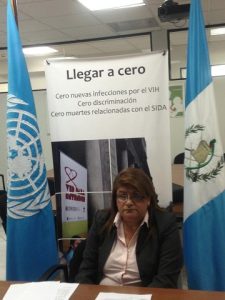
Activist Alma de León, International Treatment Preparedness Association for Latin and the Caribbean (ITPC-LATCA) coordinator, said that “We activists in treatment welcome the new antiretroviral treatment guidelines recently published by the WHO and we believe that they will help to improve our quality of life and reduce mortality. We want to state our concern regarding the omission of community health workers. We also call upon the governments of the region and UN agencies to immediately suspend use of D4T as antiretroviral medication. In spite of the WHO advising against its use, there are still various countries that continue to use it”.
Carlos Fiorentino of the Red de Jóvenes (Youth Network) added “The priority for us is to get HIV back on the international agenda, because we have been sold this idea that HIV/AIDS is no longer a problem and this has been detrimental to our work. We also believe that this framework offers the opportunity for the creation of youth-friendly clinics. The youth network seeks to promote the notion that we young people are an opportunity for change, we represent a sector that the rest of society is indebted to but we also believe that our organizations must get back to their members. Then we can help to meet these goals”.
15×15
I believe that this numbers game reflects a goal, of fifteen million people in treatment by 2015. And this, in my opinion, is perhaps the most interesting part of “Treatment 2015”. Governments, UN agencies, donors and civil society movements are committed to an ambitious and necessary goal. Just a few weeks ago we reached the desired goal of getting 10 million people living with HIV/AIDS into treatment, and this was achieved after 30 years of epidemic and over ten years with the Global Fund and other vertical governmental initiatives. We are two thirds of the way there and it is true that the final third is the most difficult, especially if we consider that the AIDS issue has lost its attraction and hold on global and national agendas, which is reflected in its disappearance as an issue in the media.
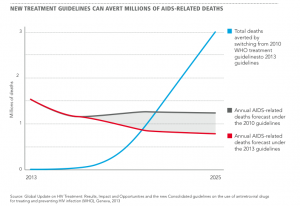
Aside from the 350 or 500 CD4 in every national guideline, the reality is that many average-income and above-average-income countries will experience a surplus in supply. There will be supplies available to treat more people living with HIV/AIDS but there will not be demand. Why? Because, on the one hand, most people living with HIV/AIDS in the region are still unaware of their serological status, and on the other hand, the notion of friendly services is just wishful thinking for most of our countries.
An access problem persists insidiously: public, private and community services cannot reach more people living with HIV/AIDS to significantly broaden their coverage. Due to many complex factors, known to all of us, the higher-risk populations do not have access to quality healthcare services.
The solution does not lie in compulsory testing. The solution may lie closer to understanding why our people neither reach nor remain in the health services. To understand and advance, our governments must re-establish a significant relationship with civil society organizations, particularly in key populations, but without the conditioning of a Global Fund requisite such as the Country Coordination Mechanisms.
The structure, the what, is clearly and completely presented in the Treatment 2015 framework document; the how will depend on national dialogue translating into an effective and efficient multisector program. The when, as we know, is just around the corner, in 2015. It is urgent that this action framework be brought into action.
We are grateful to UNAIDS Latin America for this key event and for the promptly-provided information.





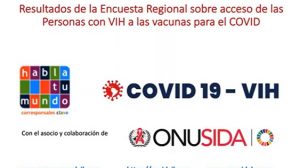

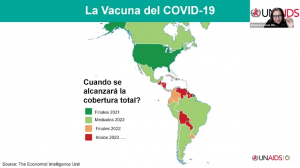


Añadir comentario